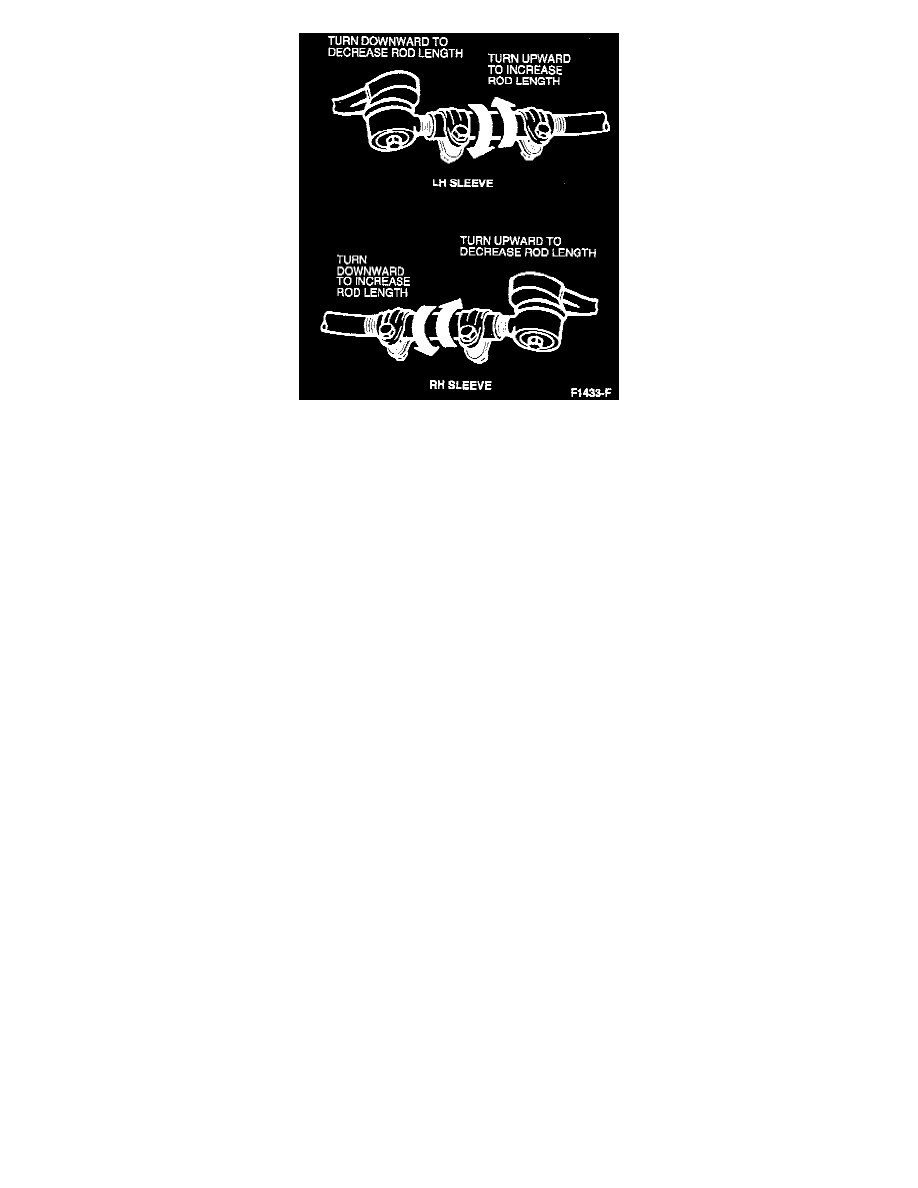Crown Victoria V8-281 4.6L SFI (1998)

NOTE: Perform the steering angle check before toe-in measurement (if any steering angle corrections have been made).
DESCRIPTION
Check the wheel steering angles at full right and left positions. If the angles are not within specification, the tie rods must be adjusted to the right
or left until the steering angles are equal. Tie rod adjustment affects the centering of the steering wheel in the straight-ahead position. Adjustments
can be fine-tuned by shifting the tie rods a small amount away from the equal angle setting. If the steering wheel cannot be centered with the
steering angles within specification, check for improper assembly or installation of the following steering components:
-
Steering gear.
-
Steering column.
-
Intermediate shaft universal joints.
-
Steering wheel.
Toe & Steering Wheel Centering (Clear Vision)
DESCRIPTION
After adjusting caster and camber, check the steering wheel spoke position with the front wheels in straight-ahead position. If the spokes are not in
their normal position, they can be properly adjusted while toe is being adjusted. Toe is the inward pointing of both front wheels. It is shown in
Reference Definitions. See: Diagrams
NOTE: Toe should only be checked and adjusted after the caster and camber have been adjusted to specification.
PROCEDURE
Check the toe with the front wheels in the straight-ahead position. Run the engine so the power steering control valve will be in the center (neutral)
position and lock the steering wheel in place using a steering wheel holder. Measure the distance between the extreme front wheels and also between
the extreme rear of both front wheels. The difference between these two distances is the toe in or toe out.
